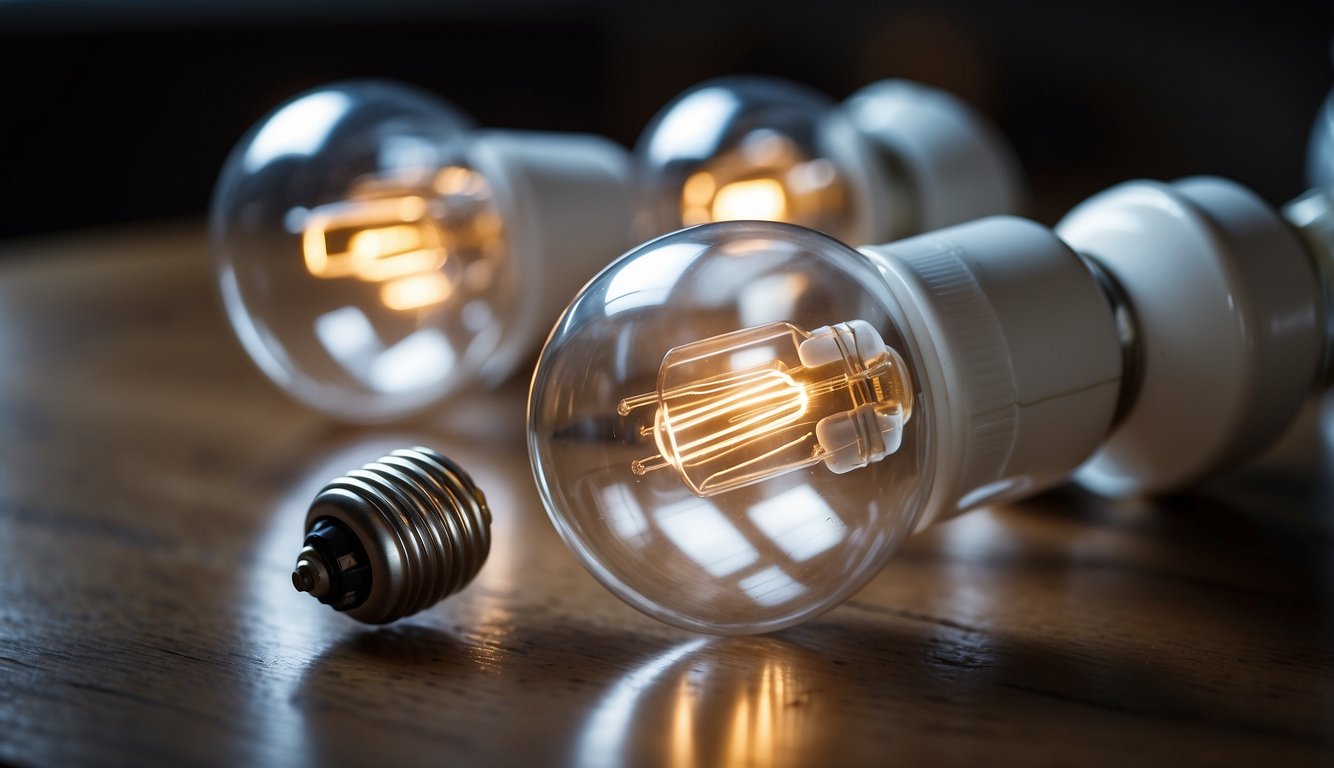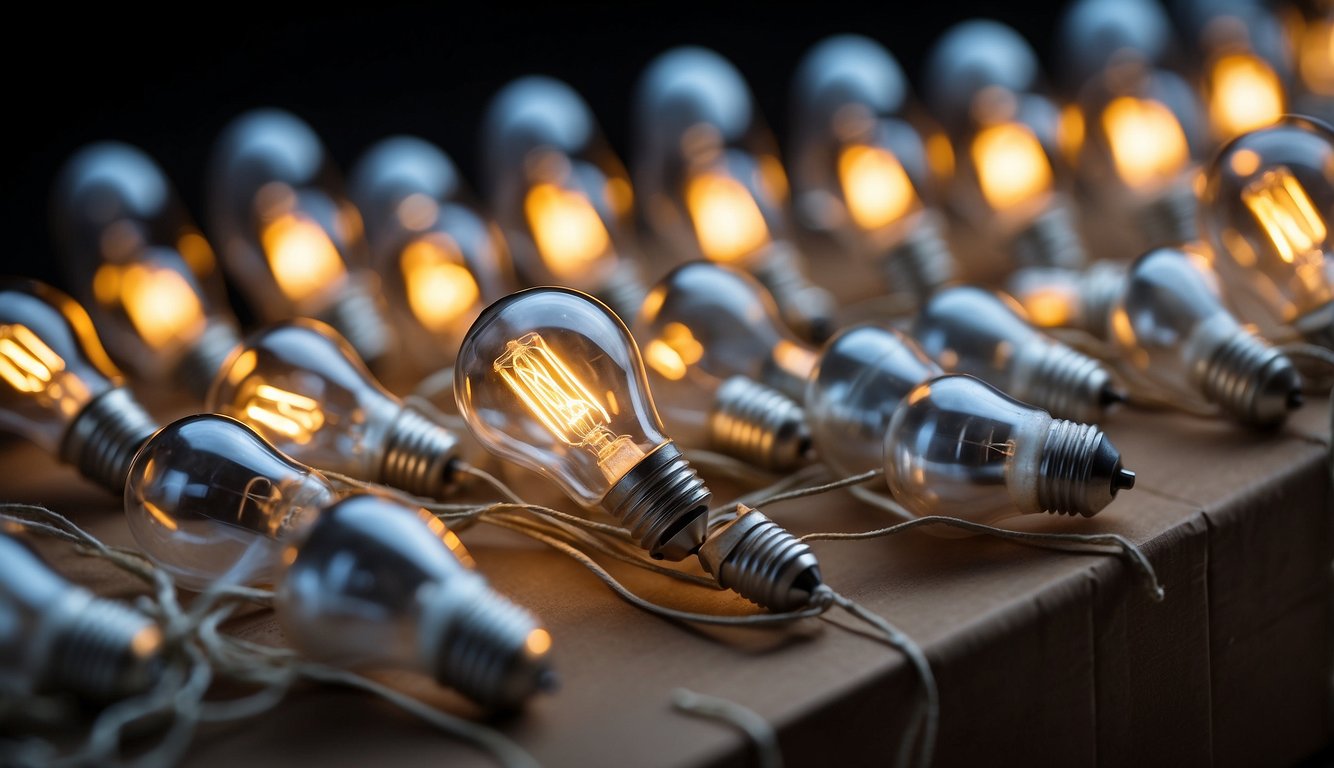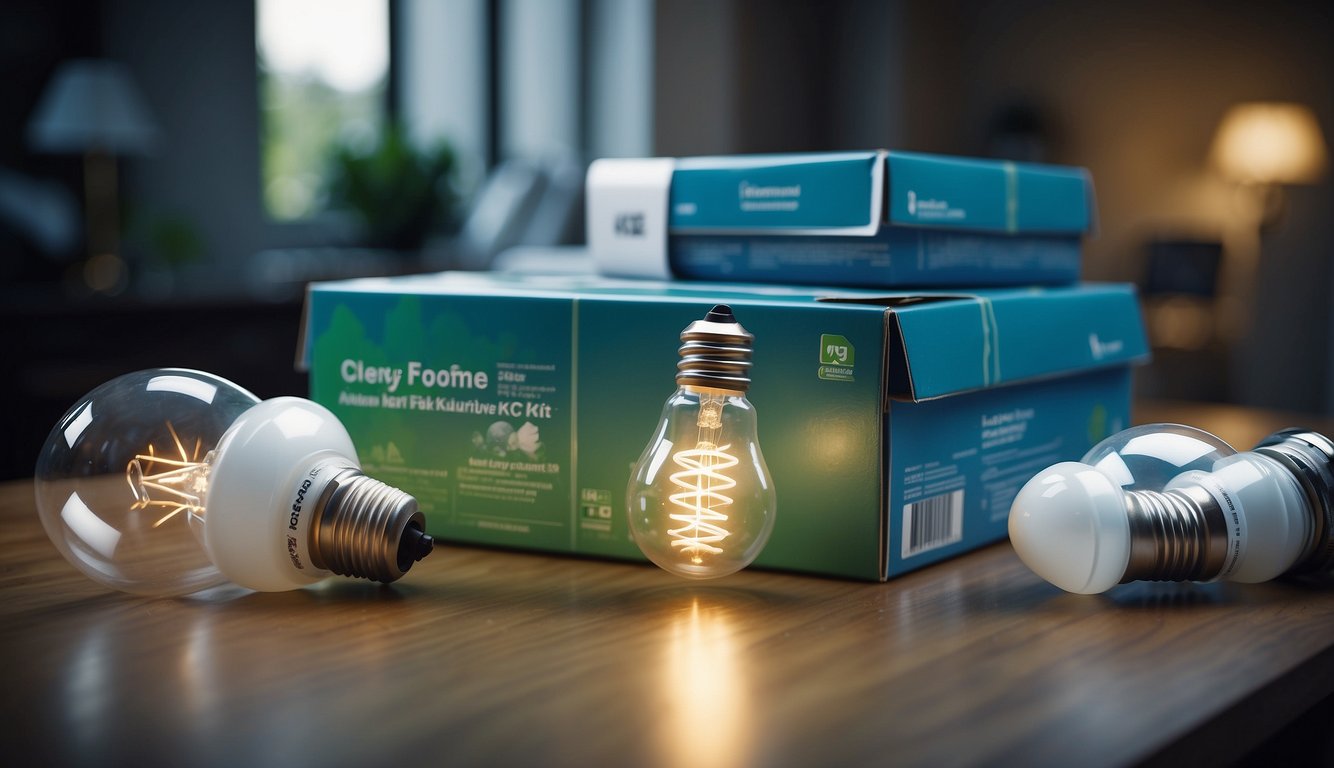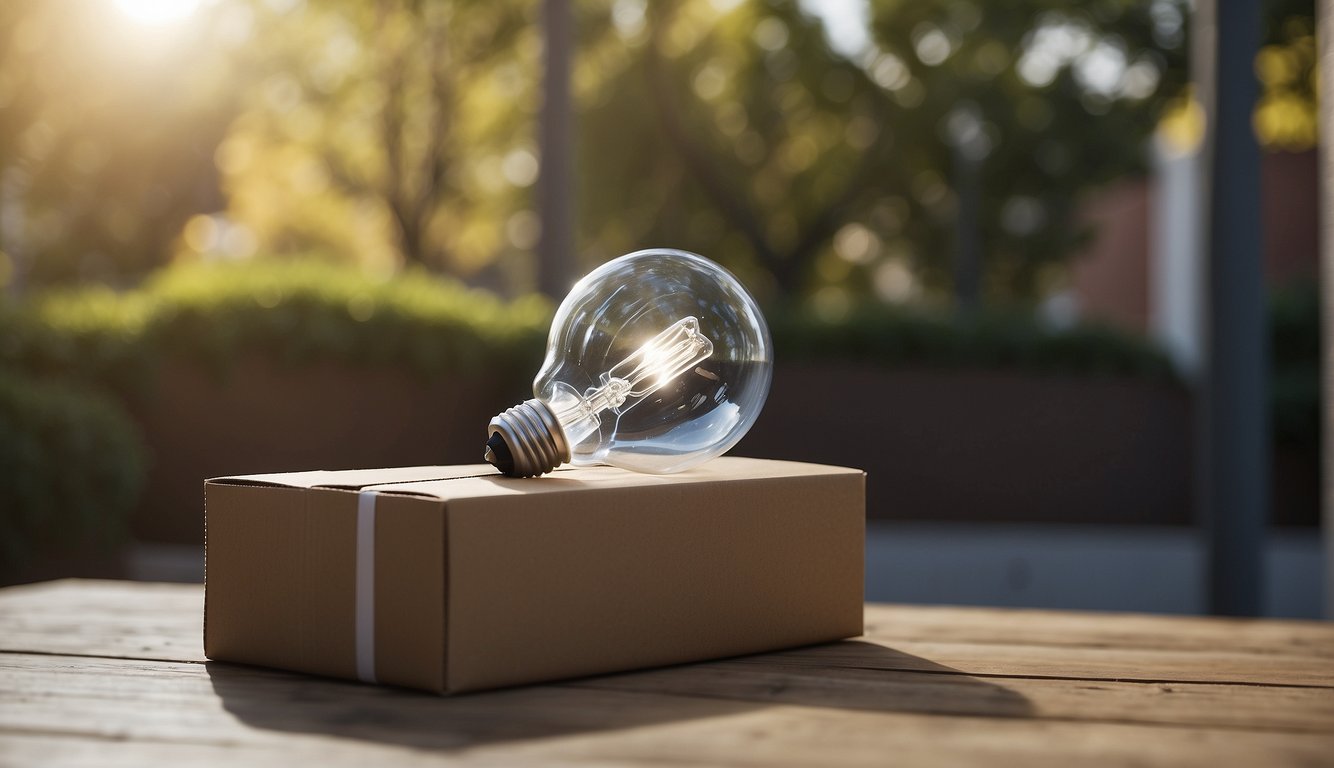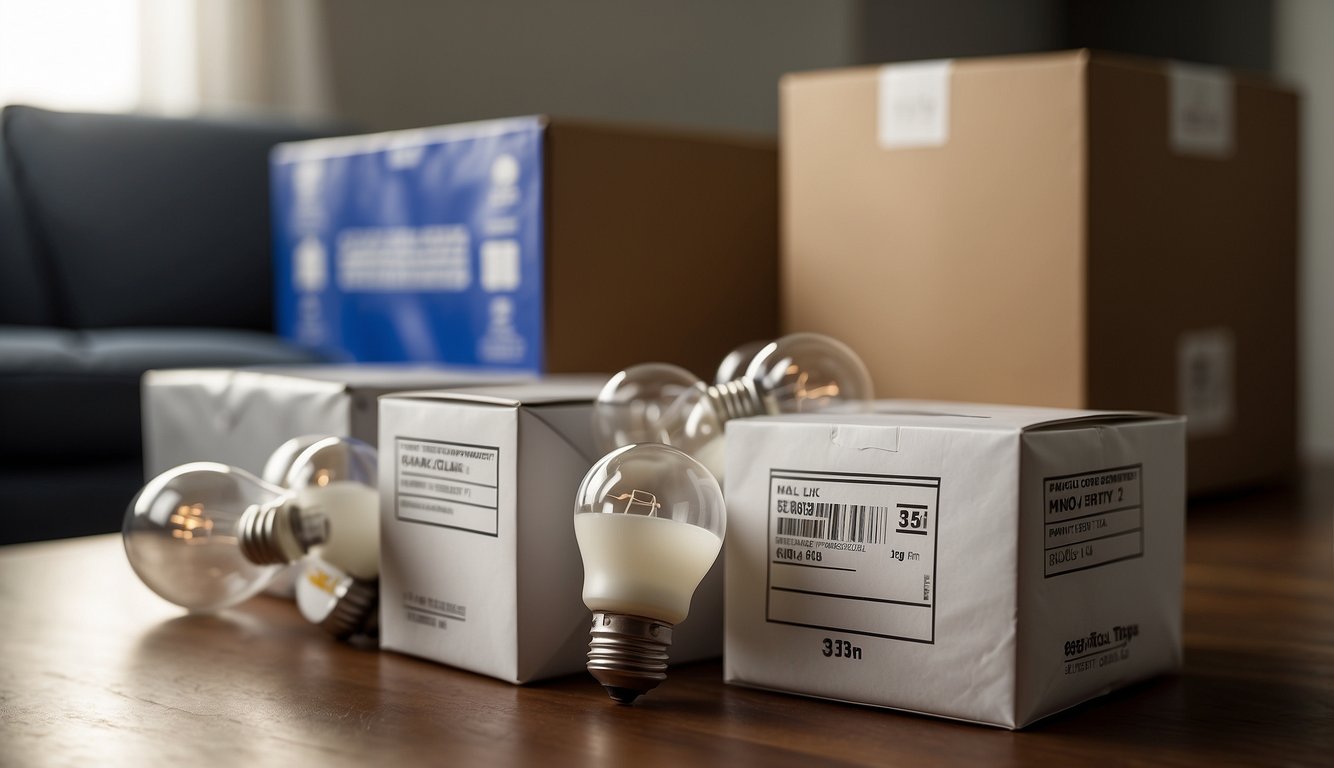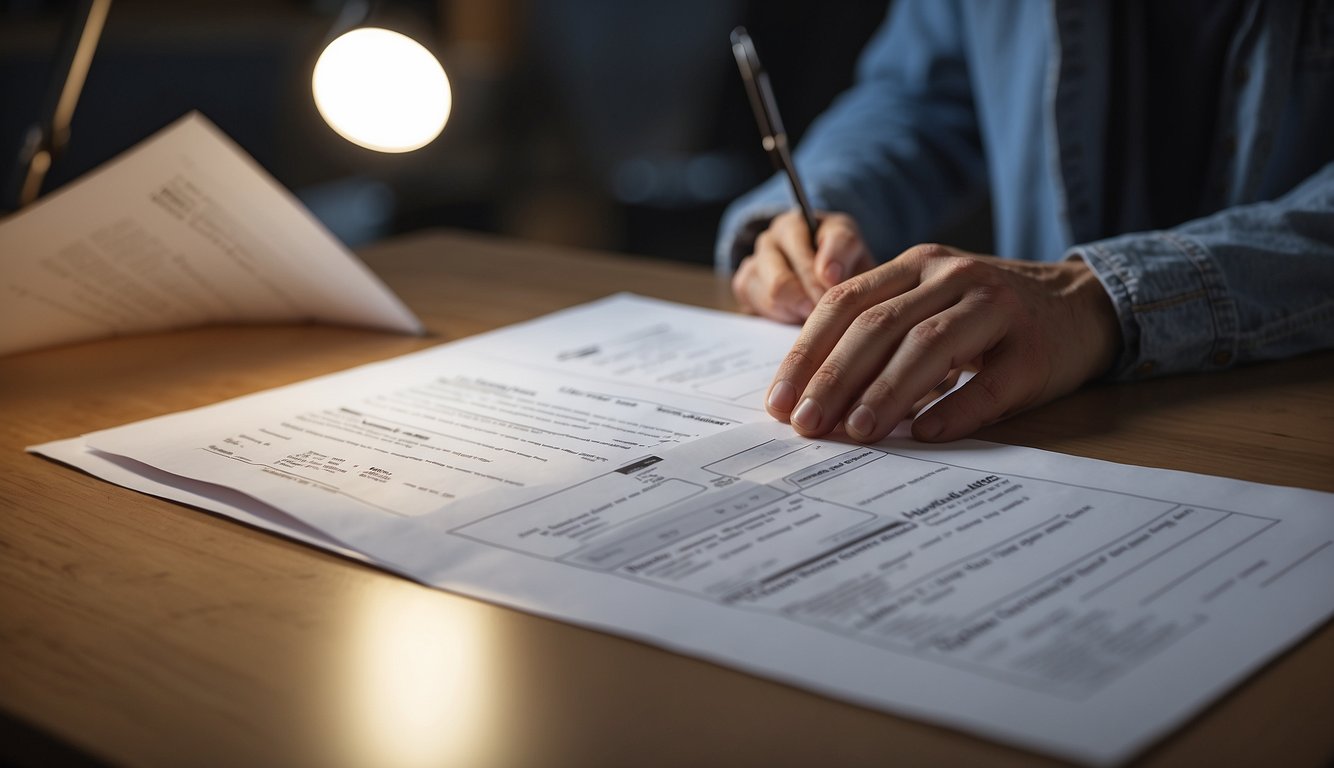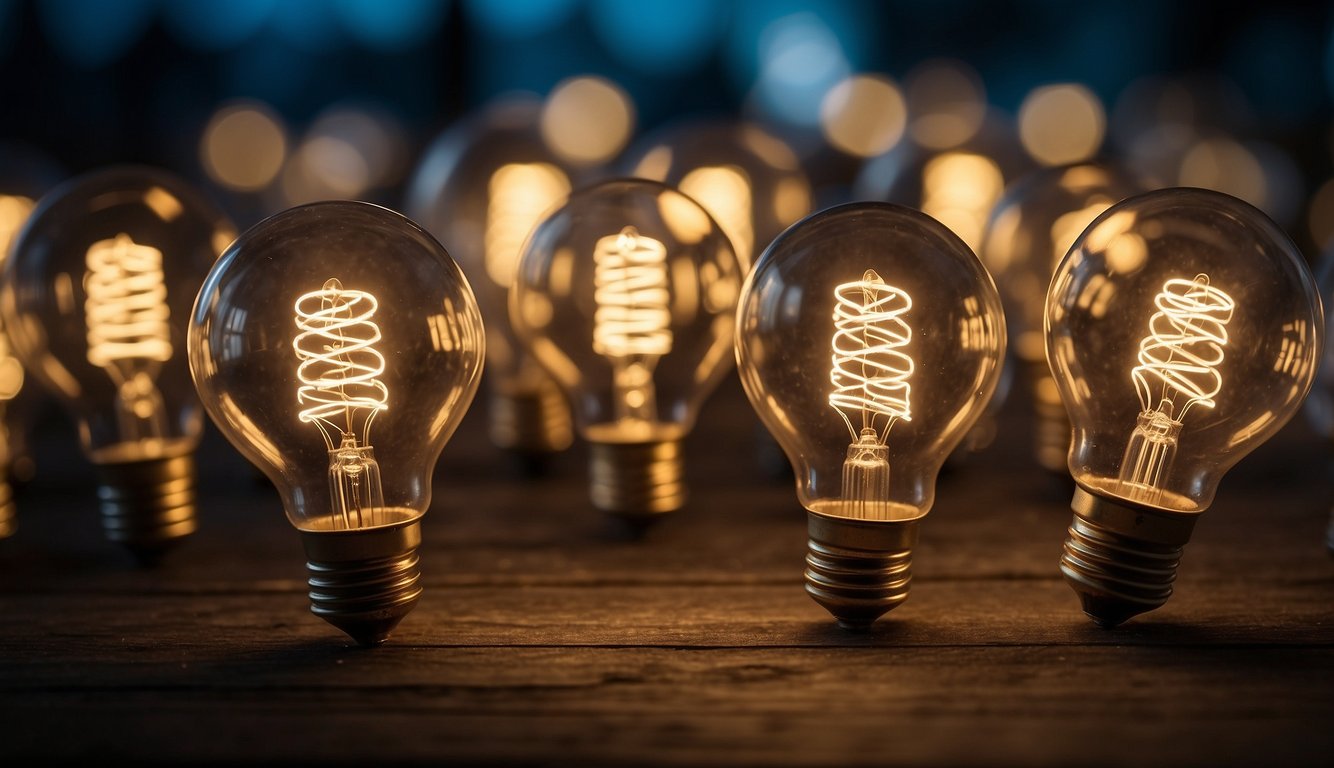Receiving free light bulbs by mail is a simple way to start saving on your energy bills. Many utility companies, energy conservation programs, and even some government initiatives offer complimentary energy-efficient light bulbs to consumers. Not only do these bulbs help reduce your immediate electricity costs by using less power, but they also have a longer lifespan, decreasing the frequency of replacements.
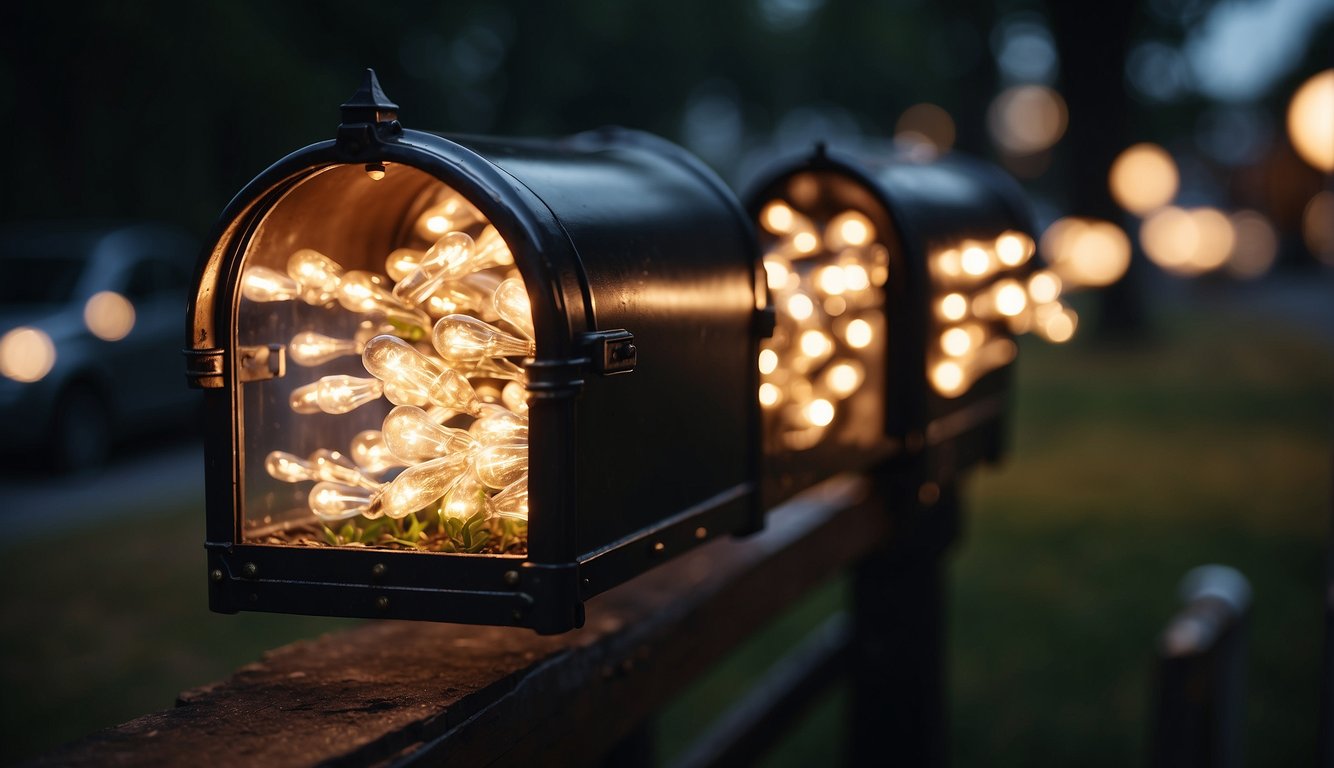
Switching to energy-efficient lighting is one of the quickest ways to cut your energy consumption. By taking advantage of programs that send free light bulbs directly to your home, you also contribute to broader environmental efforts by reducing energy demand. These programs often provide additional resources for energy conservation, helping you further understand how to maximize your household’s energy efficiency.
Key Takeaways
- Receiving energy-efficient light bulbs by mail can lower your energy bills.
- Participating in free bulb programs supports environmental conservation.
- These programs also offer guidance to enhance overall home energy efficiency.
Understanding Energy Efficiency

Before diving into specifics, it’s important you grasp how switching to energy-efficient light bulbs can lead to substantial energy savings and, in turn, save money on your utility bills.
The Importance of Energy-Efficient Light Bulbs
Energy-efficient light bulbs, such as LEDs, are crucial because they consume significantly less electricity compared to traditional bulbs. This doesn’t just help save money on your energy bills but also benefits the environment by reducing energy demand and greenhouse gas emissions. According to the U.S. Department of Energy, these lighting standards are projected to save consumers nearly $3 billion annually.
How LED Bulbs Contribute to Energy Savings
LED light bulbs are at the forefront of energy-efficient lighting solutions. Here’s a quick comparison to illustrate their impact:
| Bulb Type | Energy Used | Lifespan |
|---|---|---|
| Incandescent | High | Short |
| LED | Low | Long |
By using LED light bulbs, you’ll notice that they use significantly less energy—up to 75% less than incandescent bulbs. Moreover, they can last up to 25 times longer, which means you’re not just saving energy, but also reducing the frequency of replacements. This guide by the NRDC elaborates on the improved energy-efficiency standards for lighting.
Getting Free Light Bulbs
Are you interested in reducing your energy bill and your carbon footprint? Luckily, various state programs and energy companies offer free light bulbs to residents, especially energy-efficient LED bulbs, as part of their energy conservation efforts.
Free Light Bulbs By State
Free light bulbs are available through various state-specific programs:
- California: Local utilities may offer free energy-saving kits that include LED bulbs.
- Ohio: Residents, especially those served by Duke Energy, might have access to free LED bulbs.
- Kentucky: Some energy companies provide free LEDs to their customers.
- Indiana: Check with your local electric company as some may distribute free light bulbs.
- North Carolina & South Carolina: Duke Energy customers can apply for energy conservation kits, which often include LED bulbs.
- Virginia: Companies like Columbia Gas of Virginia offer free energy efficiency kits.
- Wisconsin: Take advantage of the Focus on Energy program to receive free energy-saving packs.
Residents in other states like Michigan, New York, and Idaho are also encouraged to reach out to their power providers for similar energy-saving opportunities.
Programs Offering Free LED Bulbs
Various programs across the country aid in energy conservation by providing free LED bulbs. Here’s how you can participate:
- Idaho Power: Customers might have access to free energy-saving kits with LEDs.
- Illinois & Iowa: Look for local energy provider initiatives that may include free LED bulb offerings.
- Washington & Oregon: Energy trust programs in these states offer resources to help you save energy, including free light bulbs.
- Arkansas, Florida, Louisiana: State energy offices or utility providers may have free LED bulb programs.
- New Orleans & Maryland: Specific city or state programs offer energy-efficient light bulbs at no cost.
- Massachusetts & Minnesota: State-sponsored energy-saving initiatives may provide LED bulbs.
- Missouri & Vermont: Check with local utilities for free energy efficiency kits.
- Washington D.C.: Energy-saving programs might involve distributing LED bulbs to residents.
Remember, it’s crucial to check with your local utility provider or state energy office to know exactly what’s available to you. Many of these programs are designed to encourage energy conservation and are accessible simply by being a resident or customer of the participating entities.
Free Energy Conservation Kits
In an effort to promote energy conservation, several utility companies and programs provide energy-saving packs containing a variety of efficient tools designed to reduce power consumption in your home.
What’s Inside an Energy Efficiency Kit
Energy efficiency kits typically contain LED bulbs, which are known for their long life and energy-saving capabilities. To further assist with energy conservation, these kits may also include power strips which help manage your devices more effectively. Some energy-saving packs have been reported to include water-saving devices like aerators and energy-efficient shower heads, providing additional utility savings.
How to Obtain Energy Conservation Kits
« Light Bulbs Without Electricity: Innovative Solutions for Illumination
Types of Light Bulb Shapes: Illuminating Options for Every Space »
To get an energy conservation kit, you usually need to be a customer of an energy provider participating in an energy-saving program. For example, customers of Duke Energy in states such as Florida and Ohio have access to these kits. Focus on Energy, a program running in Wisconsin, offers kits that can be ordered online through a simple form—just have your utility account information ready. Non-profits also sometimes offer these kits to promote energy conservation. It’s worth checking with your local energy provider or non-profit organizations that focus on sustainability to see if you are eligible for a free kit. Keep in mind there might be a limit of one pack per household per year.
Remember to always review the terms and eligibility requirements for your specific utility company or energy program to ensure you can benefit from these valuable energy conservation resources.
Direct Savings on Utilities
https://www.youtube.com/watch?v=dTMsSJAkn84&embed=true
Making your home energy-efficient can be as simple as switching to LED bulbs, and you can often get these for free by mail from your utility provider. Not only do LED bulbs consume less energy, leading to lower electricity bills, but you may also find rebate programs through your utility company to help you save even more.
Reducing Electric Bills with Free Bulbs
Free LED Bulbs: Utilities often offer energy-saving products, including LED bulbs, absolutely free. For example, Duke Energy provides free bulbs upon request to help you reduce your electric bill. Considering LEDs use up to 90% less power than traditional bulbs and can last up to 15 times longer, the energy savings can be substantial over time.
- Email Sign-ups: Many utility companies extend these offers to customers who sign up for email notifications or participate in energy conservation programs.
- Online Orders: In some cases, you can directly order your free LED bulbs through your provider’s website.
Utility Company Rebate Programs
Rebates and Coupons: Beyond free bulb campaigns, utility companies often run rebate programs where you can purchase energy-saving devices at a discounted price or receive a rebate after purchase. These rebates can apply to a variety of products, saving you even more on your utilities.
- Participating Retailers: Rebate programs often partner with specific retailers, where you can redeem a rebate form or coupon for energy-efficient products.
- Online Application: In many cases, you can apply for these rebates online, streamlining the process to ensure you get your savings promptly.
Remember, taking advantage of these offers not only helps lower your immediate costs but also contributes to long-term savings on your utilities.
Water Conservation Efforts
In your pursuit of conserving water and reducing utility bills, integrating water-saving products like faucet aerators and efficient shower heads can make a significant impact in your home.
Introducing Faucet Aerators and Shower Heads
Faucet Aerators:
Often overlooked, faucet aerators are small fittings attached to the end of your bathroom and kitchen faucets. They function by mixing the water with air, which reduces the amount of water flowing out of the faucet without compromising water pressure.
- Bathroom Faucet Aerator: Adds efficiency to your daily routines such as brushing teeth and washing hands.
- Kitchen Aerator: Makes your dish-washing more water-smart, saving water for where it’s needed most.
Shower Heads:
Switching to high-efficiency shower heads is one of the best moves for water conservation in your shower. These specially designed showerheads reduce water usage while providing you with a satisfying shower experience.
- Showerhead Swap: A simple replacement from a standard head to a high-efficiency shower head can conserve thousands of gallons per year.
Benefits of Water-Saving Products
Water-saving products not only support global sustainability efforts but also offer personal economic benefits. Here is a snapshot of the benefits you might expect:
- Lower Water Bills: Reducing your water footprint will naturally decrease your monthly water bills.
- Environmental Impact: Every gallon saved with water-saving faucet aerators and showerheads helps to preserve this precious resource for future generations.
By adopting these water-efficient accessories, you’re taking an active step towards a more sustainable lifestyle. Remember, small changes in your home can have a profound effect on water conservation efforts.
Enhancing Home Lighting
https://www.youtube.com/watch?v=1d8IK9levt4&embed=true
Upgrading your home lighting is a smart move that can save you energy and money, especially when you incorporate LED options. Let’s explore the ideal bulb selections for different areas of your abode and the role night lights can play in improving energy efficiency.
Selecting the Best LED Bulbs for Your Home
Choosing the right LED bulbs can be quite a game-changer for your home. First, check the lumens — they tell you how bright the bulb is. For a cozy, ambient feel in your living room or bedroom, look for LEDs ranging from 450 to 800 lumens. In areas where you need more clarity and precision, like your kitchen or home office, aim for bulbs that offer 1100 lumens or more.
Color temperature is also key; measured in Kelvin (K), higher numbers mean cooler (bluer) light, while lower numbers provide a warm (yellower) glow. To mimic natural daylight, you might opt for bulbs around 5000K to 6500K, or for a warm and inviting atmosphere, choose bulbs with a range of 2700K to 3000K.
- For Task Lighting: Choose LEDs with 1100 lumens or more and color temperatures of 5000K to 6500K.
- For Ambient Lighting: Opt for 450 to 800 lumens with color temperatures of 2700K to 3000K.
By upgrading, not only will your space look better with tailored lighting, but you’ll also enjoy lowered utility bills. If you’re looking for ways to obtain LEDs at no cost, companies like Duke Energy often offer free bulbs.
Night Lights and Energy Savings
An LED night light is perfect for those spaces where you require a gentle glow throughout the night — ideal for hallways or children’s rooms. These night lights are energy-efficient, rarely needing replacement since LED bulbs can last for years. When choosing a night light, consider features like built-in light sensors that automatically turn off when natural light is present, further conserving energy.
For personalized advice on how to save energy and possibly receive free energy conservation kits, which might include night lights, consider signing up for an energy checkup. This will pinpoint specific ways to enhance energy savings in your home.
- Features to Look For:
- Light sensors for automatic on/off
- LED bulbs for long-lasting use
- Cool-to-the-touch materials
Remember, each small change contributes to a bigger impact on both your energy bills and the environment. Inserting a simple LED nightlight can be the first step to a more efficient and comfortable home.
Practical Tips for Energy Conservation
Making small changes in your household can significantly impact your energy usage and bills, especially when it comes to lighting and device use. Below you’ll find targeted advice to help you conserve energy throughout the year and particularly during the winter season.
Winter Energy Saving Strategies
- Dress for the Season: Wear warm clothing and add layers instead of turning up the heat. This simple step can reduce your heating bill.
- Insulate Your Home: Check for draughts around windows and doors. Use insulating tape or draught excluders to keep warmth in and cold out.
Maximizing Energy Efficiency in Daily Life
- Switch to LED Light Bulbs: LED lights consume less electricity and last longer than traditional bulbs.
- Smart Usage of Power Strips: Plug multiple devices into a smart power strip and turn it off when not in use to prevent phantom energy loss.
Program Eligibility and Application
Exploring programs offering free light bulbs can be a smart move for your home’s energy savings. Understanding the qualification criteria and knowing how to apply are crucial first steps.
How to Qualify for Free Light Bulbs and Kits
To be eligible for free light bulbs and energy conservation kits, your residency and customer status often play significant roles. Energy providers and regional initiatives typically require you to be an existing customer to benefit from their programs. For example, some may offer free LED bulbs if you complete an online energy audit to identify potential energy savings in your household. Other programs might target specific groups based on income or age, providing specialized support to those who may find energy-efficiency upgrades financially challenging.
Applying for Energy-Saving Programs
When you’re ready to apply, follow a clear but straightforward process. Start by visiting your energy provider’s website or a designated offers page they may have. Here, you’ll likely find an application form or a point of contact. Availability might depend on program funding, so it’s wise to apply as soon as you can. Keep an eye out for rebates, which are discounts applied after purchase. Sometimes, instead of direct mail programs, customers can receive rebates for purchasing qualified energy-saving products like ENERGY STAR certified lighting. Remember, timely submission of any required documents, including proof of purchase if relevant, will help you order your free light bulbs without a hitch.
Environmental Impact
https://www.youtube.com/watch?v=eR0G0VWyU-U&embed=true
In this section, you’ll learn how something as simple as a light bulb can have a considerable effect on the environment. Free distribution of energy-efficient lighting, specifically LED bulbs, plays a role in reducing our ecological footprint and supporting green projects.
Reducing Carbon Footprint with LED Bulbs
LED bulbs are a game-changer for your home’s energy conservation efforts. They use up to 75% less energy than traditional incandescent bulbs and last 25 times longer. By taking advantage of offers for free LED bulbs, you’re contributing to a sizable decrease in the carbon emissions associated with electricity use. It’s a direct action you can take to combat climate change.
Contribution of Free Bulbs to Green Projects
When you participate in programs offering free bulbs, you’re effectively becoming part of a larger green project. These initiatives often have a focus on energy savings that extend beyond individual homes. By adopting energy-efficient LEDs, you contribute to a collective effort to reduce the strain on power grids and minimize environmental impact, creating a ripple effect towards a sustainable future.
Community Initiatives and Partnerships
Community initiatives and partnerships play a pivotal role in distributing free light bulbs to households, combining efforts from various nonprofit organizations and electric companies seeking to enhance energy efficiency and assist low-income families.
Non-Profits and Electric Companies’ Roles
Non-profits often collaborate with electric companies to facilitate the distribution of free LED bulbs. For instance, you might find People’s Energy Cooperative teaming up with local organizations to provide not just energy-efficient bulbs, but also tools that help monitor your home’s energy usage. These efforts can lead to significant savings for many families.
Collaborations Between Energy Companies and States
Energy companies have established partnerships with state agencies to expand the reach of energy-saving programs. Take Duke Energy, for example; they provide free bulbs to residents in several states, including Ohio and Florida, ensuring more homes are fitted with efficient lighting. On the other hand, MidAmerican Energy and Alliant Energy offer similar energy efficiency kits, proving that public and private sectors can work synergistically for the betterment of community resources and environmental health.

